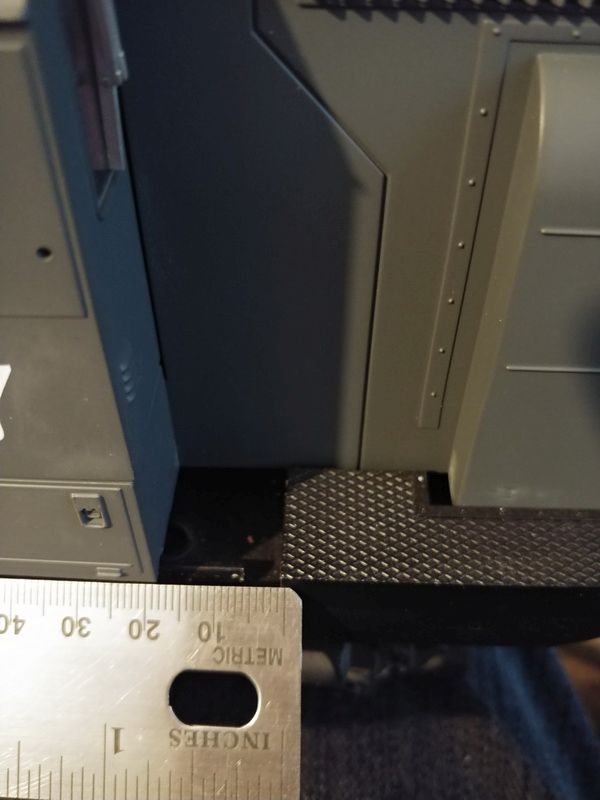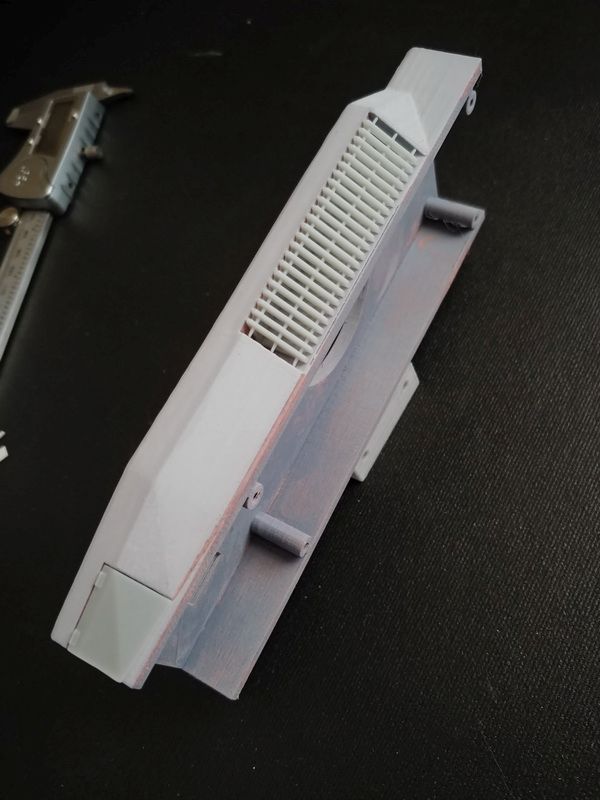One of my projects is to convert a USAT GP38-2 to a GP40-2. Last week I bought an SD40-2 shell and frame because … Well just because it was $50 and I figured I could do something with it someday. Today I’m looking at the shell and think “the body sure doesn’t look much longer than a geep when the porches are off.” So I place it on a GP38-2 frame and Whoah!
Looks like if I cut about 18mm off behind the cab, I’ve got a pretty close representation of a GP40-2! Anyone done this before?



